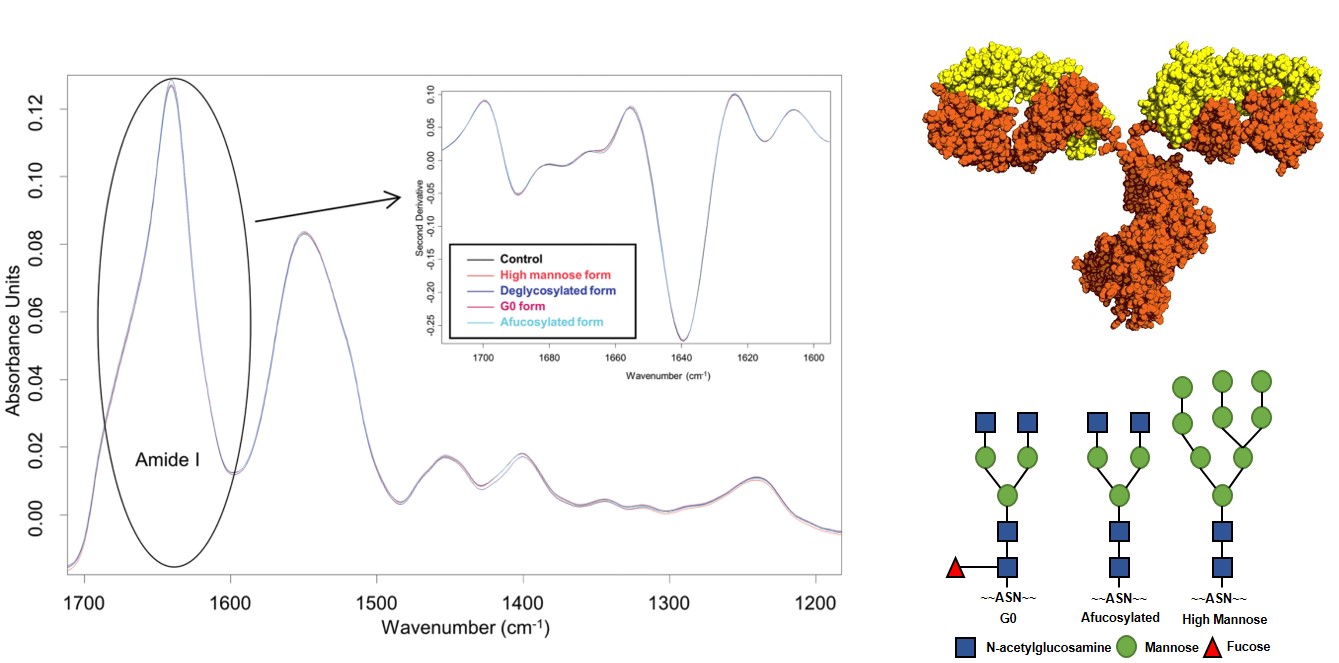Monoclonal antibodies (mAbs) are the most common protein that is being developed by many companies as therapies against a wide range of diseases. A variety of analytical tools have been used to give a comprehensive characterization of mAb candidates in terms of their biophysical properties, stability, affinity, etc, to ensure product efficacy and safety. Particularly, high-order structure (HOS) is one of the critical quality attributes (CQAs) that should be characterized according to the ICH Q6B guideline. Creative Biolabs offers Fourier transform infrared (FTIR) spectroscopy for analysis of antibody secondary structure.
Introduction to FTIR Spectroscopy
FTIR spectroscopy is an absorption spectroscopy that can be used to obtain information about the vibrational states of molecules. For proteins, the FTIR spectrum is composed of many vibrational bands arising from different functional groups such as N-H, C=O, and so on. The protein backbone amide groups generate a number of characteristic IR bands that can be used to determine protein backbone conformation and secondary structure. Firstly, the Amide I band, which is in the region of 1,600-1,700 cm-1, is primarily due to the amide C=O stretching vibrations of the peptide bonds. Different secondary structures, such as alpha-helix, beta-sheet, and beta-turn, exhibit characteristic frequencies and intensities in the Amide I band region due to differences in the hydrogen bonds in these structures. By comparing the measured spectra to the spectra of proteins with known structure, the secondary structure of the test proteins can be obtained.
On the other hand, the Amide II band, which is in the region of 1,500-1,600 cm-1, is due to C-N stretching vibrations in combination with N-H bending. Amide II absorbance can be used, for example, to report on protein unfolding based on the extent of hydrogen (H) exchanged for deuterium (D) in H-D exchange experiments.
 Fig.1 FTIR spectra of different antibody glycoforms. (Zheng, 2014)
Fig.1 FTIR spectra of different antibody glycoforms. (Zheng, 2014)
Antibody Analysis Services Provided by Creative Biolabs Based on FTIR Spectroscopy
-
Characterize antibody secondary structure both in solution and in the solid state (lyophilized)
-
Characterize the secondary structures of mAb produced by different expression systems
-
Compare the structures of mutants and wild-type antibody
-
Examine if any changes in mAb conformation have occurred as a result of changes to the process, formulation, manufacture, and storage conditions
-
Study the influence of glycosylation pattern on mAb secondary structure
Features of Our Services
-
Delivery of data with high sensitivity, accuracy, and resolution
-
Broad expertise in recombinant mAbs and related products, such as biosimilars, fusion proteins, Fab and Fc fragments
-
Customized services to meet all the specific needs of our clients
For high-order assessment, our biologic characterization group also provides other orthogonal techniques, including nuclear magnetic resonance spectroscopy (NMR), circular dichroism (CD) spectroscopy, and fluorescence spectroscopy.
If you are interested in our services, please do not hesitate to contact us for more details.
Reference
-
Zheng, K.; et al. Influence of glycosylation pattern on the molecular properties of monoclonal antibodies. MAbs. Taylor & Francis. 2014, 6(3): 649-658.
For Research Use Only.


 Fig.1 FTIR spectra of different antibody glycoforms. (Zheng, 2014)
Fig.1 FTIR spectra of different antibody glycoforms. (Zheng, 2014)

